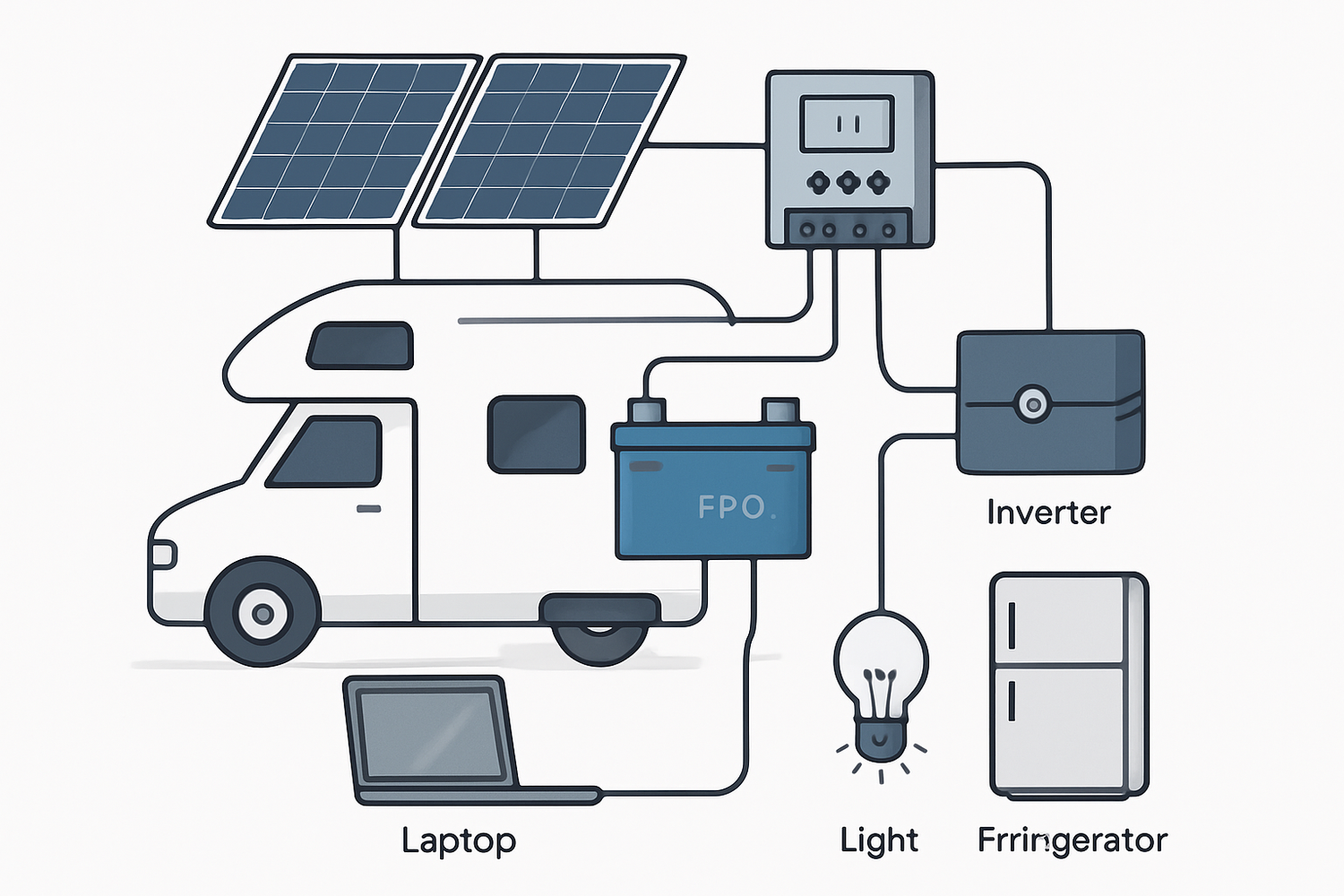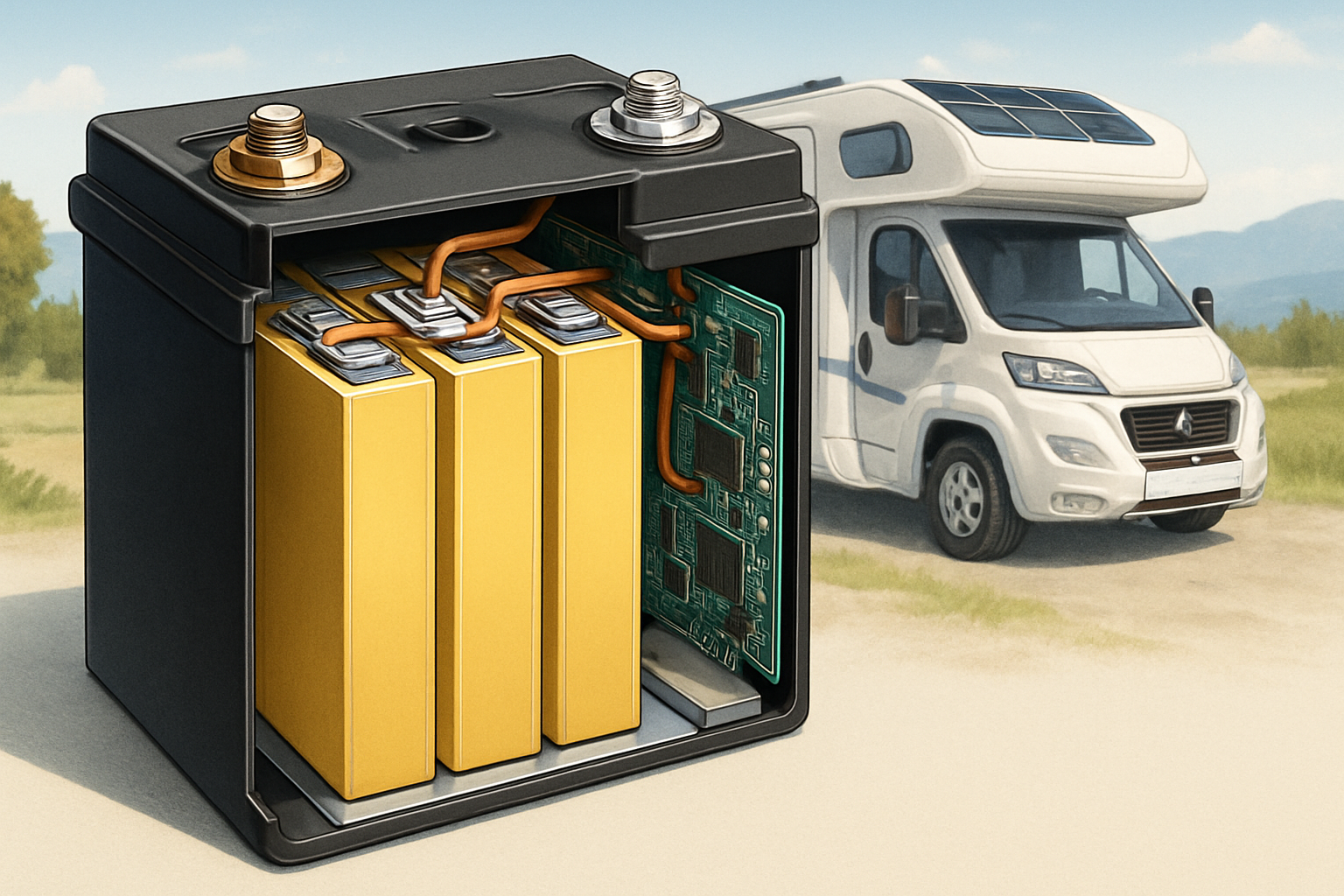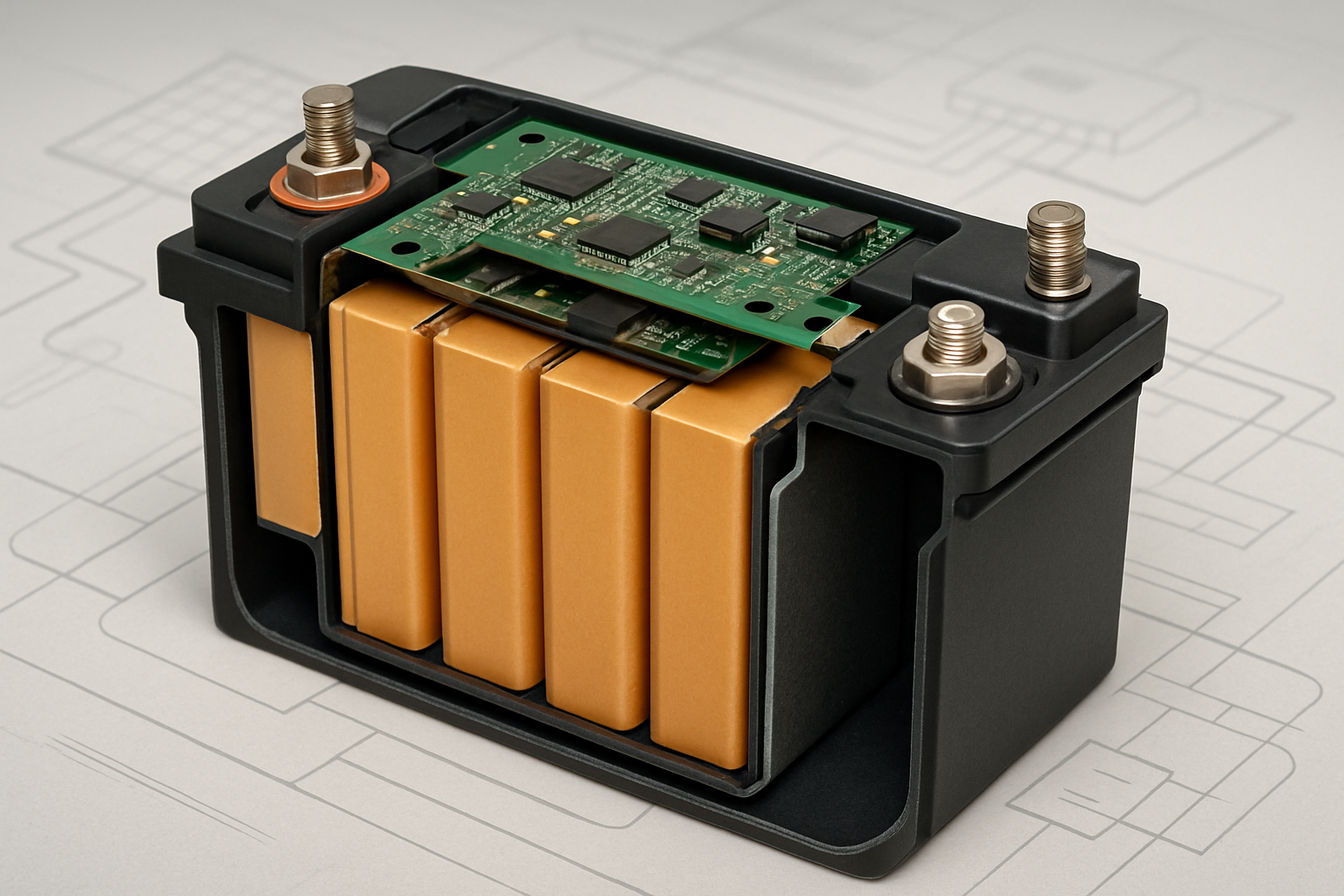Creating a robust RV solar power system is much like designing a compact, mobile home battery system. The goal is the same: to achieve reliable energy independence, allowing you to power your appliances and devices wherever your travels take you. A well-designed RV battery storage setup provides the freedom to explore off-grid destinations without sacrificing comfort. This guide explains the essential components, proper system sizing, and key integration practices to build a dependable power solution for your vehicle.
Core Components of Your RV's Power Hub
An efficient RV energy system relies on several key components working together. Each part plays a critical role in capturing, storing, and delivering electricity on demand. Understanding their functions is the first step toward building a system that meets your needs.
The Foundation: High-Performance Lithium Batteries
The heart of any modern RV battery backup is the battery itself. Lithium iron phosphate (LiFePO4) batteries have become the industry standard for good reason. A 12V LiFePO4 battery offers superior safety, a longer lifespan, and greater efficiency compared to traditional lead-acid alternatives. Key specifications to consider are voltage (typically 12V for RVs), capacity measured in Amp-hours (Ah), and a high depth of discharge (DoD), which allows you to use more of the stored energy. A quality lithium ion deep cycle battery provides consistent power output even as it discharges.
Capturing Sunlight: Solar Panels and Mounting
Solar panels are your mobile power plant. Monocrystalline panels are a popular choice for RVs due to their high efficiency and smaller footprint. The way you connect your panels—in series or parallel—affects the system's voltage and its performance in partial shade. Proper mounting ensures the panels are secure and positioned for optimal sun exposure, continuously feeding your lithium battery storage.
The Brains of the Operation: Charge Controllers and Inverters
A solar charge controller and an inverter manage the flow of energy. An MPPT (Maximum Power Point Tracking) charge controller is crucial, as it optimizes the power harvested from the solar panels to charge your batteries efficiently. The inverter converts the DC power stored in your batteries into AC power, which is needed to run standard household appliances. A pure sine wave inverter is recommended to safely power sensitive electronics.
Sizing Your RV Solar Power System Correctly
One of the most critical steps is correctly sizing your system. An undersized system will leave you without power, while an oversized one is an unnecessary expense. Sizing involves a careful calculation of your energy consumption and recharging capabilities.
Calculating Your Daily Energy Needs
First, conduct an energy audit to determine your daily power consumption. List all the DC and AC appliances you plan to use, their power draw in Watts, and the estimated number of hours you will use them each day. This gives you a total daily energy requirement in Watt-hours (Wh).
| Appliance | Power Consumption (Watts) | Estimated Daily Use (Hours) | Daily Energy (Watt-hours) |
|---|---|---|---|
| LED Lights (x4) | 20 | 4 | 80 |
| Laptop | 60 | 3 | 180 |
| Water Pump | 60 | 0.5 | 30 |
| Refrigerator (DC) | 50 | 8 (cycle time) | 400 |
| Fan | 30 | 5 | 150 |
| Total | 840 |
Matching Battery Capacity to Your Lifestyle
Once you know your daily Watt-hours, you can determine the required battery capacity. To convert Watt-hours to Amp-hours for a 12V system, use the formula: Daily Wh / 12V = Daily Ah. For an 840 Wh daily need, you would require 70 Ah (840 / 12). It is wise to add a buffer and account for days without sun (days of autonomy). For example, to have enough power for two days, you would need at least a 140Ah battery. A 200Ah lithium battery would provide ample capacity and a comfortable margin.
Sizing Your Solar Array for Effective Recharging
Your solar array must be large enough to fully recharge your batteries. The recharging capability depends on the 'peak sun hours' for your location, which is the average number of hours per day that solar irradiance equals 1,000 W/m². A simplified formula is: Solar Array Size (Watts) = Daily Watt-hours / Peak Sun Hours. If you need 840 Wh and average 4 peak sun hours, you would need a 210W solar array (840 / 4).
Integrating the System for Optimal Performance
Proper integration ensures all components work together safely and efficiently. This involves more than just connecting wires; it requires attention to safety protocols and system monitoring.
Wiring and Safety Considerations
Using the correct wire gauge is essential to minimize power loss and prevent a fire hazard. All high-current connections should be protected with fuses or circuit breakers placed as close to the battery as possible. A master shut-off switch is also a critical safety feature, allowing you to quickly disconnect the entire system if needed.
The Role of a Battery Management System (BMS)
Any reputable lithium iron phosphate battery comes with an integrated Battery Management System (BMS). The BMS is a crucial safety component that protects the battery from over-charging, over-discharging, excessive temperatures, and short circuits. It ensures the battery operates within its safe limits, extending its lifespan and ensuring reliable performance.
Monitoring Your Power
A shunt-based battery monitor is an invaluable tool for any RV solar power system. Unlike simple voltage readings, a monitor accurately tracks the energy flowing in and out of your battery. This provides a precise state-of-charge (SoC) percentage, so you always know exactly how much power you have left.
Achieving True Energy Independence on the Road
Building a home battery storage system for your RV is an empowering step toward complete travel freedom. By carefully selecting quality components, accurately sizing the system to your needs, and ensuring a safe installation, you create a self-sufficient power source. This setup not only reduces reliance on noisy generators and expensive campground hookups but also provides quiet, clean, and reliable energy for all your adventures. A well-integrated solar energy storage system transforms the travel experience, delivering comfort and convenience no matter how far you roam. For a deeper analysis of battery performance metrics, you can review this ultimate reference on solar storage performance. As noted by the Electricity Storage Valuation Framework from IRENA, electricity storage is a prominent solution for managing renewable energy sources. This principle applies just as well to a mobile RV system as it does to a stationary grid. Furthermore, the Next Generation Wind and Solar Power report from the IEA highlights how battery storage can increase self-consumption of solar energy, a key goal for any off-grid setup.
Frequently Asked Questions
Can I use a home battery in my RV?
While the term 'home battery' is often used for residential systems, the principles are the same. RV battery storage systems use similar components, like LiFePO4 batteries and inverters, but they are specifically designed for the demands of a mobile environment, including vibration resistance and compact size.
How long will an RV battery storage system last?
The lifespan depends on the components. A high-quality LiFePO4 battery can last for thousands of cycles, often translating to 10 years or more of service. Solar panels typically have a performance warranty of 20-25 years.
Is a solar charging system for my RV a good investment?
A solar power system is a significant upfront investment, but it can provide long-term value by reducing or eliminating the need for paid campsites with electrical hookups and generator fuel. It also provides reliable power in remote locations, enhancing your travel freedom. According to the U.S. Department of Energy, solar has been found to consistently add value to homes, a principle that extends to the self-sufficiency of an RV. As detailed in an EERE Success Story, transparent information about a solar energy system can be a significant asset.
What is the difference between a 100Ah and 200Ah lithium battery?
The main difference is capacity. A 200Ah battery can store twice as much energy as a 100Ah battery. This means it can power more appliances or run them for longer periods before needing a recharge. The right choice depends on your calculated daily energy consumption.





Leave a comment
All comments are moderated before being published.
This site is protected by hCaptcha and the hCaptcha Privacy Policy and Terms of Service apply.